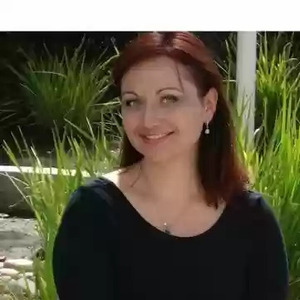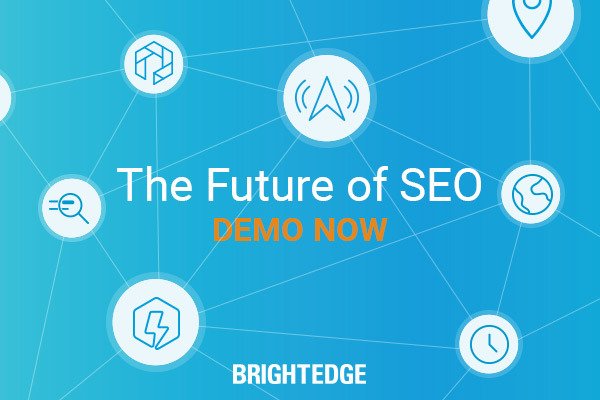Alison MacDonald is the digital marketing manager of global marketing for Seagate Technology. In her role, she creates and deploys  global digital marketing strategy with a focus on SEO. Her key focus at Seagate is organizing and deploying content strategy for U.S. and regional marketing. Ahead of Share 14, Alison gives her insight into content strategy, SEO and how to stay ahead of the "ever-evolving beast."
global digital marketing strategy with a focus on SEO. Her key focus at Seagate is organizing and deploying content strategy for U.S. and regional marketing. Ahead of Share 14, Alison gives her insight into content strategy, SEO and how to stay ahead of the "ever-evolving beast."
The SEO Landscape
Andy Betts (AB): How much has the SEO landscape changed over the last year?
Alison MacDonald (AM): SEO has changed tremendously over the past year, mostly in its transition from just being a “keyword” driven tool, to establishing itself as a collection of best practices that cover everything from content, social media and PR to user experience and Web architecture.
With all of the Google algorithm updates, SEO is now more in the forefront of many marketers’ minds and is gaining more traction than ever before, both by allowing those who focus on SEO to get more traction and buy in, and by allowing us to be more successful in our programs -- rather than pushing just to get our programs understood.
AB: What has had the biggest impact for you and your company? AM: With all of the publicity of companies being penalized for bad SEO practices, the biggest impact for Seagate has been increased awareness and acceptance across our whole organization about what SEO is, and how we can build an even more solid foundation going forward, with multiple teams contributing, than we have ever been able to before.
AB: How do you see the space evolving over the next year?
AM: SEO is an ever-evolving beast that has never really changed. Marketers should continue to create great content with their customer’s journey and best experience in mind. Google, Yahoo, Yandex, Baidu, etc., will continue to promote top rated content that resonates with an audience: relevant and likeable content that is easy to find. Look out for the customer, write for the customer, and create a solution your customer wants to buy, and your website will continue providing value and you’ll continue to be awesome!
AB: Any tips to share on adapting to rapid change in the market?
AM: Change is inevitable. Keep doing the right thing for the customer, stop trying to predict the future, and don’t try and “game” the system. Great content will prevail in all capacities. If you do get penalized, figure out what you did wrong, learn from it, and move on.
AB: What are you doing to shift focus from keyword to page performance strategies in light of secure search?
AM: We are spending more time understanding our customers, which is not only allowing us to rank better, but also helping us create better products and speak to a customer in a manner they understand. Secure search simply forced us to do what we should have been doing from the beginning: using our internal knowledge to communicate with our external customers.
The Content Marketing Shift: Optimization, Measurement, Performance
AB: How are you aligning your content and search optimization efforts?
AM: Our content and SEO efforts are becoming one and the same. We focus our content creation around how our customers talk about our product at different stages of the funnel, and target our content strategy accordingly. The old-school SEO practice of isolating keywords becomes more of a puzzle when you have the opportunity to align content to buying behavior.
AB: How critical is measurement of content in your organization?
AM: Measurement is a high priority for all of the content we create at Seagate. While it’s an ongoing process that we continue learning from, we have also found that we get better every day due to our efforts to measure the success of our content and how our customers are interacting with it.
AB: Tell us more about your view on the convergence of content and SEO – what are the challenges and what advice can you give the audience?
AM: Know that it’s going to take time to move your perspective (and website) from a keyword-driven entity to a content-driven entity. Don’t forget, or underestimate, the value of your internal resources when it comes to talking about where content should go and how customers want to be talked to. Talk to your customers, understand what they are seeking, and make everything easy for them to find.
One of the biggest challenges we’ve faced is: where do we put all of this awesomeness? We are still working on finding the perfect solution, but we know that the effort and testing and interaction with our customers will be rewarded eventually. It takes time: be patient and persevere!
Your Share 14 Session
AB: Can you tell us about your Share 14 session?
AM: My session is on scaling content and making content that you already have work more efficiently for your audience and for your demand gen/lead gen efforts. Seagate is a hardware-heavy company with a lot of crazy technical documents, but we also have some serious capabilities that our products and services are capable of. We like to talk about both of those sides of the house without doing a lot of rework, while reaching a lot of diverse audiences and personas.
AB: Why Share – why do you attend?
AM: Share is an awesome chance to meet the “industry” hot-shots, digital marketing network, and learn more about what everyone else is doing and learning. I’m looking forward to seeing old friends, making new contacts, and learning new tips and tricks to become more efficient.
AB: What advice can you give Share attendees to make the most of the experience?
AM: Talk to everyone, no matter what their title is or yours. Ask questions in the sessions (it’s embarrassing when no one has a question)! Don’t be shy!
Your Partnership with BrightEdge
AB: How do you use BrightEdge to achieve your business objectives?
AM: I use BrightEdge to help with tracking, research and suggestions. I love the platform and the easy automated reporting that I can set up for various levels of understanding across the organization.
On a daily basis, I use BrightEdge for research, suggestions and brainstorms.
On a weekly basis I use BrightEdge to drive the Web team batty, directing them to track what changes have been made and what changes still need to be made, without going into multiple systems or having to manually check pages.
On a monthly basis, I use it to track performance of content, share of voice increase (or decrease), overall social listening, and creating new content ideas. On a quarterly basis, BrightEdge is my backup for when I need to make changes in our process or strategy.
Annually it shows (in pictures!) how well we’ve performed, which pages/content are the most successful, and what our competitors are doing across all timelines.
I also use BrightEdge to help me feel better about myself in comparison to what other companies are doing.
AB: What do you love about BrightEdge?
AM: I love many things about BrightEdge. For one, the fact that I’ve always worked with someone named “Mike,” so I don’t have to learn new names!
Secondly, that BrightEdge takes recommendations and suggestions, and run with them. Finally, that my ideas come to life because the technical team actually listens, and that I have beautiful PDFs that I can print and put on the wall to show the success of our content and SEO strategy.
See some fun content that is really working: check out BrightEdge's SEO Jokes post.

